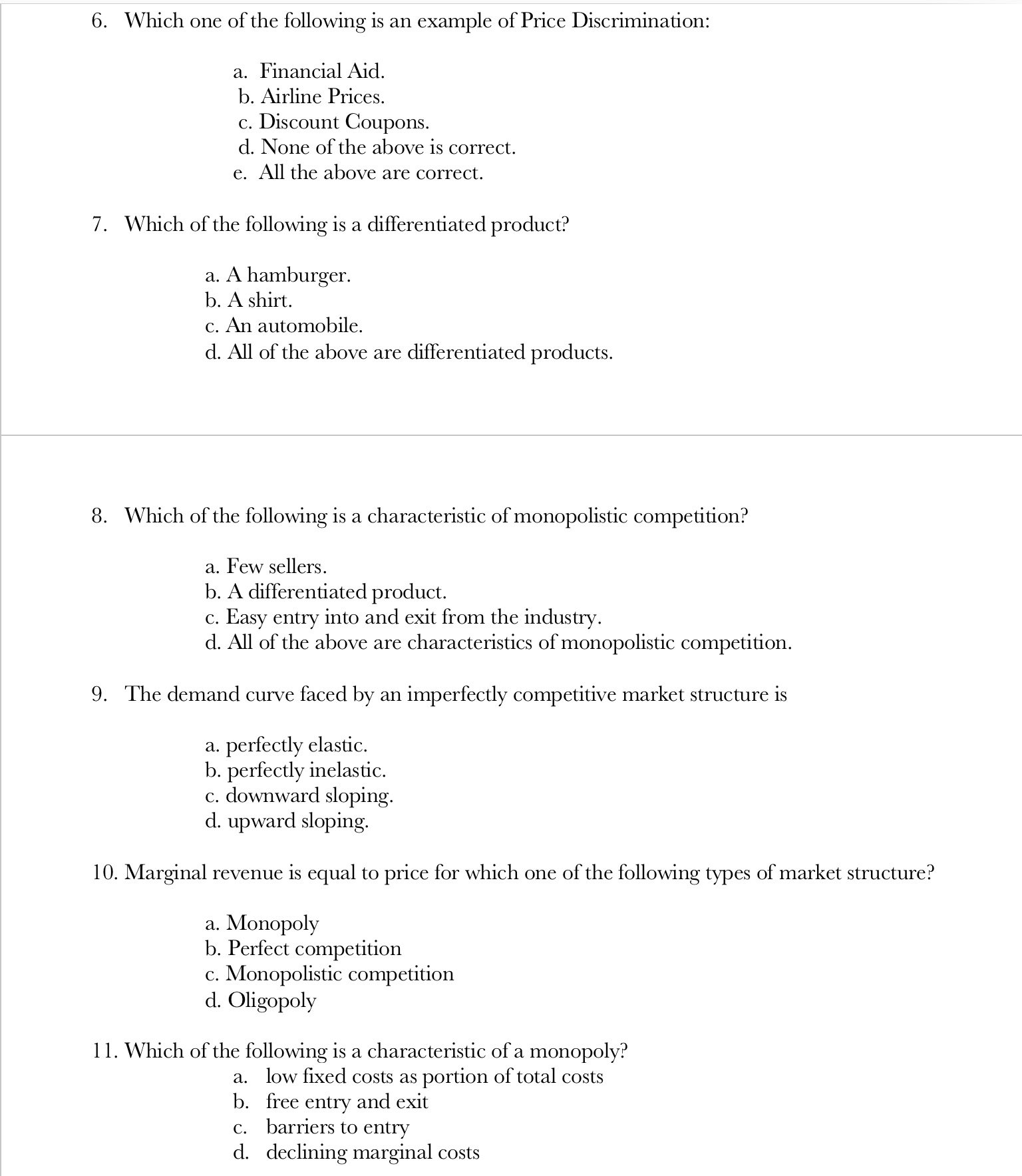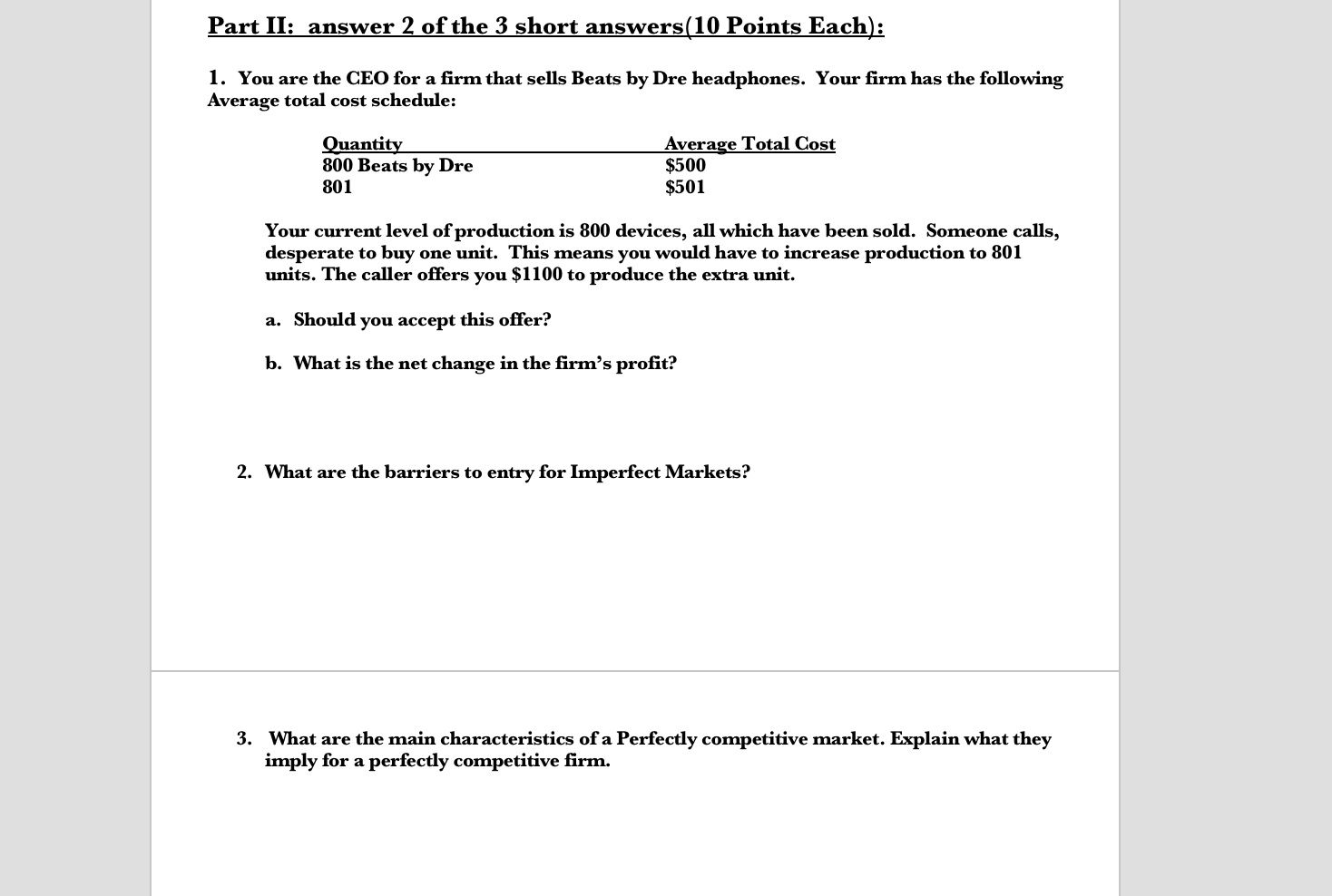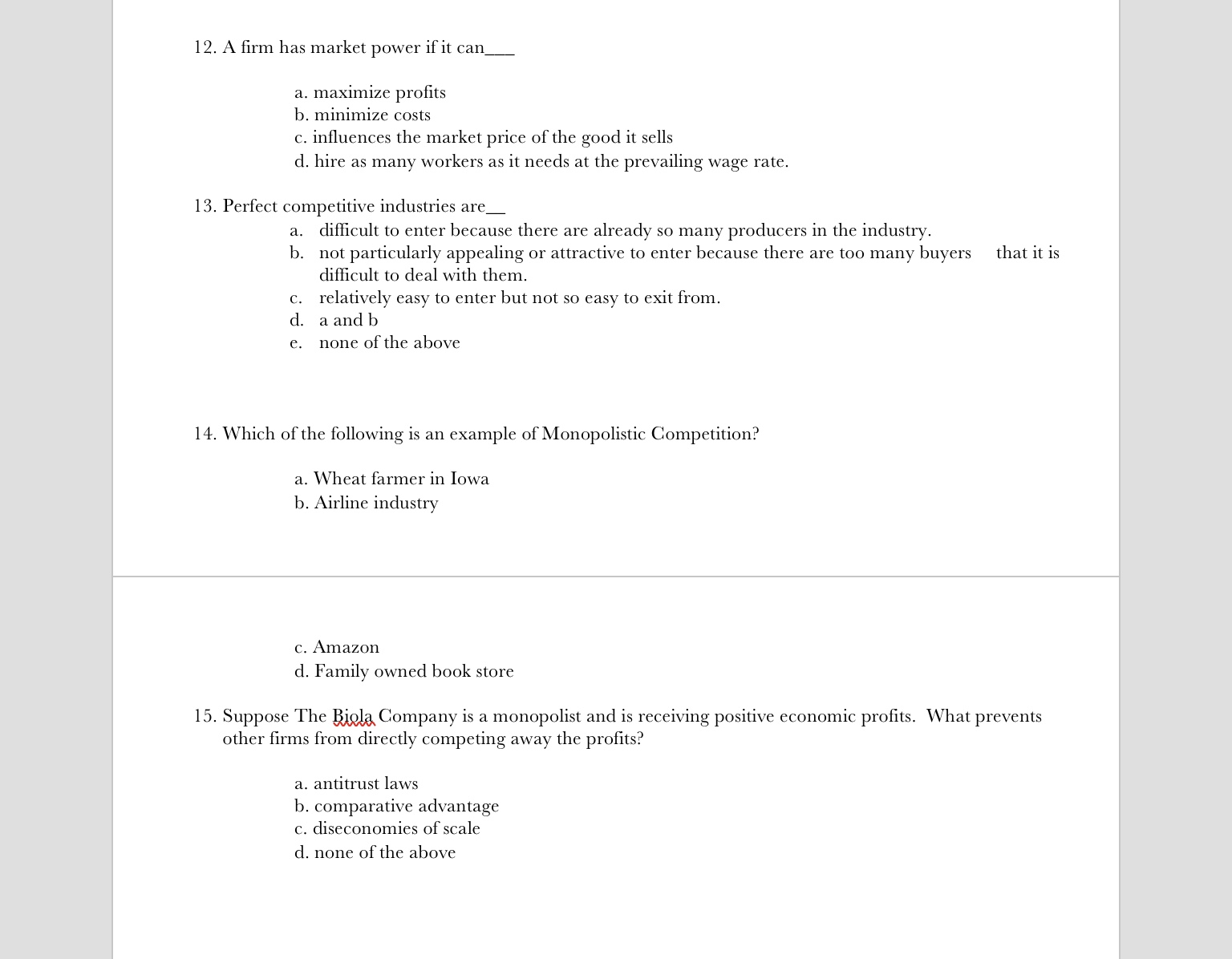No cursive. Please solve these questions. Solve this as soon as possible. These are due today for me.
6. Which one of the following is an example of Price Discrimination: a. Financial Aid. b. Airline Prices. c. Discount Coupons. (1. None of the above is correct. 6. All the above are correct. 7. Which of the following is a differentiated product? a. A hamburger. b. A shirt. 0. An automobile. d. All of the above are differentiated products. 8. Which of the following is a characteristic of monopolistic competition? a. Few sellers. b. A differentiated product. 0. Easy entry into and exit from the industry. (1. All of the above are characteristics of monopolistic competition. 9. The demand curve faced by an imperfectly competitive market structure is a. perfectly elastic. b. perfectly inelastic. c. downward sloping. d. upward sloping. 10. Marginal revenue is equal to price for which one of the following types of market structure? a. Monopoly b. Perfect competition 0. Monopolistic competition (1. Oligopoly l 1. Which of the following is a charactelistic of a monopoly? a. low fixed costs as portion of total costs b. free entry and exit c. barriers to entry (1. declining marginal costs Part II: answer 2 of the 3 short answers(10 Points Each): 1. You are the CEO for a firm that sells Beats by Dre headphones. Your firm has the following Average total cost schedule: Quantity Average Total Cost 800 Beats by Dre $500 801 $501 Your current level of production is 800 devices, all which have been sold. Someone calls, desperate to buy one unit. This means you would have to increase production to 801 units. The caller offers you $1100 to produce the extra unit. a. Should you accept this offer? b. What is the net change in the firm's profit? 2. What are the barriers to entry for Imperfect Markets? 3. What are the main characteristics of a Perfectly competitive market. Explain what they imply for a perfectly competitive firm.1. If a rm sells its output on a market that is characterized by many sellers and buyers, a homogeneous product, unlimited long-run resource mobility, and perfect knowledge, then the rm is a a. a monopolist. b. an oligopolist. c. a perfect competitor. d. a monopolistic competitor. 2. If a rm sells its output on a market that is characterized by a single seller and many buyers of a homogeneous product for which there are no close substitutes and barriers to long-run resource mobility, then the rm is a. a monopolist. b. an oligopolist. c. a perfect competitor. d. a monopolistic competitor. 3. If a rm sells its output on a market that is characterized by many sellers and buyers, a differentiated product, and unlimited long-run resource mobility, then the rm is a. a monopolist. b. an oligopolist. c. a perfect competitor. d. a monopolistic competitor. 4. If a rm sells its output on a market that is characterized by few sellers and many buyers and limited long- run resource mobility, then the rm is a. a monopolist. b. an oligopolist. c. a perfect competitor. d. a monopolistic competitor. 5. Which of the following markets comes close to satisfying the assumptions of a perfectly competitive market structure? a. The soft drink market. b. The market for agricultural commodities such as wheat or corn. c. The market for petroleum and natural gas. d. All of the above come close to satisfying the assumptions of perfect competition. Answer the following True/ False: (2 points each) 1. T/ F Government-created monopoly can come from the existence of patent and copyright laws. 2. T/ F Price discrimination is associated with an Oligopoly? 3. T/ F Monopolistic competitive rms can increase demand for its product by having a successful advertising campaign. 4. _T/F If P>ATC, a firm should enter the market. 5. _T/F When firms act together in this way to reduce output and keep prices high, it is called collusion. 6. _T/ F The prot-maximizing point can be found when marginal revenue is equal to marginal cost. 7. _T/ F The prisoners' dilemma teaches us that oligopolies have an incentive to cheat. 8. _T/ F One type of imperfectly competitive market is the monopoly. 9. +T/ F Perfectly competitive rms can produce less than desirable demand, and charge a higher prlce. 10. T/ F A perfectly competitive rm can use nonprice competition for an advantage? 12. A firm has market power if it can_ a. maximize profits b. minimize costs c. influences the market price of the good it sells d. hire as many workers as it needs at the prevailing wage rate. 13. Perfect competitive industries are_ a. difficult to enter because there are already so many producers in the industry. b. not particularly appealing or attractive to enter because there are too many buyers that it is difficult to deal with them. C. relatively easy to enter but not so easy to exit from. d. a and b e. none of the above 14. Which of the following is an example of Monopolistic Competition? a. Wheat farmer in Iowa b. Airline industry c. Amazon d. Family owned book store 15. Suppose The Biola Company is a monopolist and is receiving positive economic profits. What prevents other firms from directly competing away the profits? a. antitrust laws b. comparative advantage c. diseconomies of scale d. none of the above











